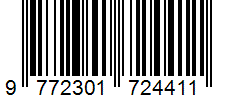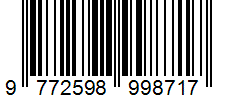PENINGKATAN KUALITAS PRODUK DAN PRODUKTIFITAS PADA PROSES LASER MARKING PERANKITAN INTEGRATED CIRCUIT
Abstract
Melalui penelitian dan analisis data, tim menemukan akar permasalahan dan mengambil tindakan korektif yang sesuai. Solusi yang diusulakan adalah melakukan modifikasi desain input pusher dari desain sebelumnya yaitu tipe solid menjadi tipe U. Solusi ini mengurangi kerusakan kaki-kaki IC pada proses laser marking secara signifikan. Pengamatan awal menunjukkan bahwa desain baru mampu mengurangi sampai dengan 98% kerusakan kaki-kaki IC pada proses laser marking.
Keywords
Full Text:
PDFReferences
Bowen Zheng and Grace X. Gu, 2019, Tuning graphene mechanical anisotropy via defect engineering, Elsevier. Available on: https://www.sciencedirect.com/science/article/pii/S0008622319309078
Design Rules, 2019, PT. Unisem Batam
Florian Eger, Daniel Coupek, Davide Caputo, Marcello Colledani, Mariluz Penalva, Jon Ander Ortiz, Hermann Freiberger, Gernot Kollegger, 2018, Zero defect manufacturing strategies for reduction of scrap and inspection effort in multi-stage production systems, Elsevier. Available online at: www.sciencedirect.com
Foivos Psarommatis, Gokan May, Paul Dreyfus & Dimitris Kiritsis, Apr 2019, Zero defect manufacturing: state-of-the-art review, shortcomings and future directions in research, International Journal of Production Research. Available on: https://doi.org/10.1080/00207543.2019.1605228
Imai, Masaaki, Kaizen, The Key to Japan’s Competitive Success, The Kaizen Institute, Ltd. 1996
Ingle, Kathryn A., Reverse Engineering, Mc Graw Hill, 1994.
Japan Human Relation Assosiation, 1980, The idea book, Improvement through TEI (Total Employee Involvement), Productivity, Inc. 101 Merritt 7 Corporate Park
KV Gopinath and K Padmanabhan, 2020, Design and value engineering of a high temperature high pressure multifunctional compression moulding unit to manufacture zero defect part, IOP Conference Series : Material Science and Engineering 1123 (2021) 012046 doi:10.1088/1757-899X/1123/I/012046.
Kathryn A. Ingle, Reverse Engineering, McGraw-Hill, Inc, 1994
O. Myklebust, 2013, Zero defect manufacturing: a product and plant oriented lifecycle approach, 8th CIRP Conference on Intelligent Computation in Manufacturing Engineering, Available online at: www.sciencedirect.com
Pitta, Dennis A, University of Baltimore, Baltimore Maryland USA, Product Innovation and Management in a Small Enterprice, Journal of product and brand management, Emerald Group Publishing, 2008.
Shingo, Shigeo, Zero Quality Control: Source Inspection and the Poka Yoke System, Productivity Press, 1986
Shingo, Shigeo, Non-Stock Production: The Shingo System for Continous Improvement, Productivity Press, 1988
https://ipqi.org/pengertian-diagram-pareto-dan-cara-membuatnya/ diakses 1 Juni 2021.
DOI: https://doi.org/10.33373/profis.v9i1.3260
Refbacks
- There are currently no refbacks.

This work is licensed under a Creative Commons Attribution-NonCommercial-NoDerivatives 4.0 International License.
E-ISSN 2598-9987
This work is licensed under a Creative Commons Attribution-ShareAlike 4.0 International License.
PROFISIENSI: Jurnal Program Studi Teknik Industri
Building A, 1st Floor, Faculty of Engineering, University of Riau Kepulauan
Jl. Pahlawan No.99, Batu Aji, Batam, Kepulauan Riau
Email: Profisiensi@journal.unrika.ac.id





